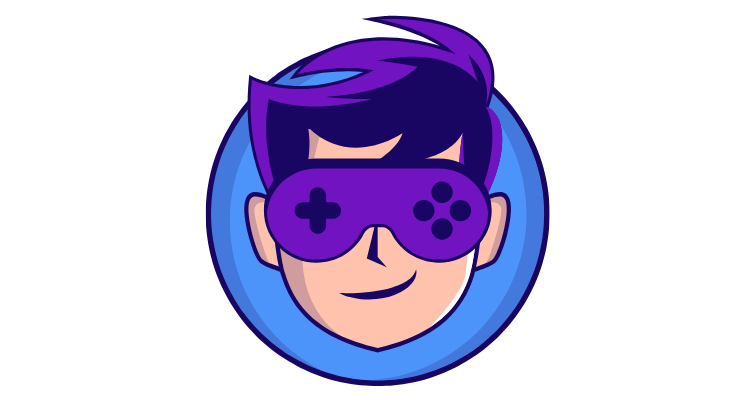Kizuna AI was the first modern virtual YouTuber (VTuber) in the world, posting her first video in 2016. But since then, there have been thousands of other VTubers joining the industry.
In fact, the global VTuber market was valued at USD 2.8 billion in 2023 and is expected to reach over USD 22.4 billion by 2029.
Among the main reasons for this 34% projected annual growth is technology. Think of advancements in social media, virtual reality (VR), AI, and 3D rendering. These solutions are making it easier, cheaper, and faster to create virtual streamer avatars.
So, what’s the role of low-poly AI tools in all these? Let’s look at five ways they’re fueling this rise.
Table of Contents
Toggle1. Faster Avatar Creation with Low-Poly Models

Creating a digital avatar used to take weeks, especially for streamers with no 3D design background. But now? Tools powered by AI can cut that time down to hours or even minutes.
Low-poly modeling simplifies the whole process. Because it uses fewer polygons, it doesn’t require intense rendering or manual sculpting.
Add AI into the mix, and it gets even better. AI solutions can take a simple sketch or photo and turn it into a usable avatar in a few clicks. Tools like a low-poly generator have made avatar creation more accessible for solo VTubers and content creators with no design team.
Now you can build a basic model for Twitch or design a full identity for YouTube with no barriers. You don’t need to be an expert in Blender or Unity anymore. You just need an idea and a little help from AI.
2. Lightweight Graphics for Real-Time Streaming

Live streaming is demanding on both your internet connection and your hardware. And if you’re running a high-poly 3D avatar on top of OBS, alerts, and a game window, it can overload your system.
That’s where low-poly AI tools come in. Low-poly assets are less graphically intense, meaning they load faster and take less CPU/GPU power to run. For streamers, this translates to smoother frame rates and fewer crashes during live sessions.
Real-time streaming avatars need to move, emote, and sync with voice without lag. Low-poly models do that efficiently, especially when AI tools optimize them during creation. You get smooth animations that don’t tank your frame rate.
This is even more important for mobile streamers or creators using mid-range setups. With fewer graphical demands, streamers can focus on their content instead of tech troubleshooting. It’s performance without compromise.
3. Creative Freedom with Stylized Aesthetics
Low-poly doesn’t mean low-quality; it just means a different kind of art. And for many streamers, that’s a huge plus.
Stylized avatars help streamers stand out in a sea of photorealistic models. Low-poly aesthetics often feel more charming, artistic, or nostalgic, similar to what we see in indie games or animated series.
It also gives creators more freedom to express their personality. Bright colors, exaggerated features, or surreal environments all become easier to pull off. Some streamers even build entire visual brands around their low-poly persona.
Thanks to AI and the evolving AI models, generating these unique styles doesn’t require a full design team. Just a concept and a few prompts can result in something that feels truly “you.”
4. Cost-Efficiency for Indie Streamers
Not every streamer can afford a custom-rigged model from a 3D artist. Prices can go into the thousands, and that’s before you factor in animation or upgrades.
Low-poly AI tools change that. Many are free or low-cost, and they don’t require expensive software licenses. Some run straight from your browser.
That means creators can experiment with different looks, test new channels, or pivot without spending a fortune. Even updates like seasonal themes or outfit changes become quick and affordable.
5. Integration with Popular Streaming Platforms
Creating a great avatar is only half the battle, it also needs to work with your streaming setup.
Luckily, low-poly avatars are lightweight and widely compatible. Most can be easily imported into tools like OBS, VTube Studio, Animaze, or even Unity-based streaming apps. With the help of an AI character SDK, developers and creators can streamline the integration of avatars into various platforms, enabling features like facial tracking, lip sync, and animation with minimal setup.
And because they’re not resource-heavy, syncing them with facial tracking or voice input is usually seamless.
For desktop streamers, setup is quick. For mobile creators, low-poly assets run smoother and don’t drain battery life as fast. Some tools even allow you to export files directly in formats supported by streaming software.
The result? Less setup stress and more time actually creating content. Whether you’re live on Twitch or recording clips for TikTok, low-poly tools keep the workflow simple.
Conclusion
Low-poly AI tools are opening up new creative paths for streamers around the world. They make avatar creation faster, lighter, and more affordable without sacrificing style or performance.
As the virtual streamer space keeps growing, these modern AI tools are helping new voices join the scene. And with platforms like 3DAI Studio leading the charge, this is just the beginning.








